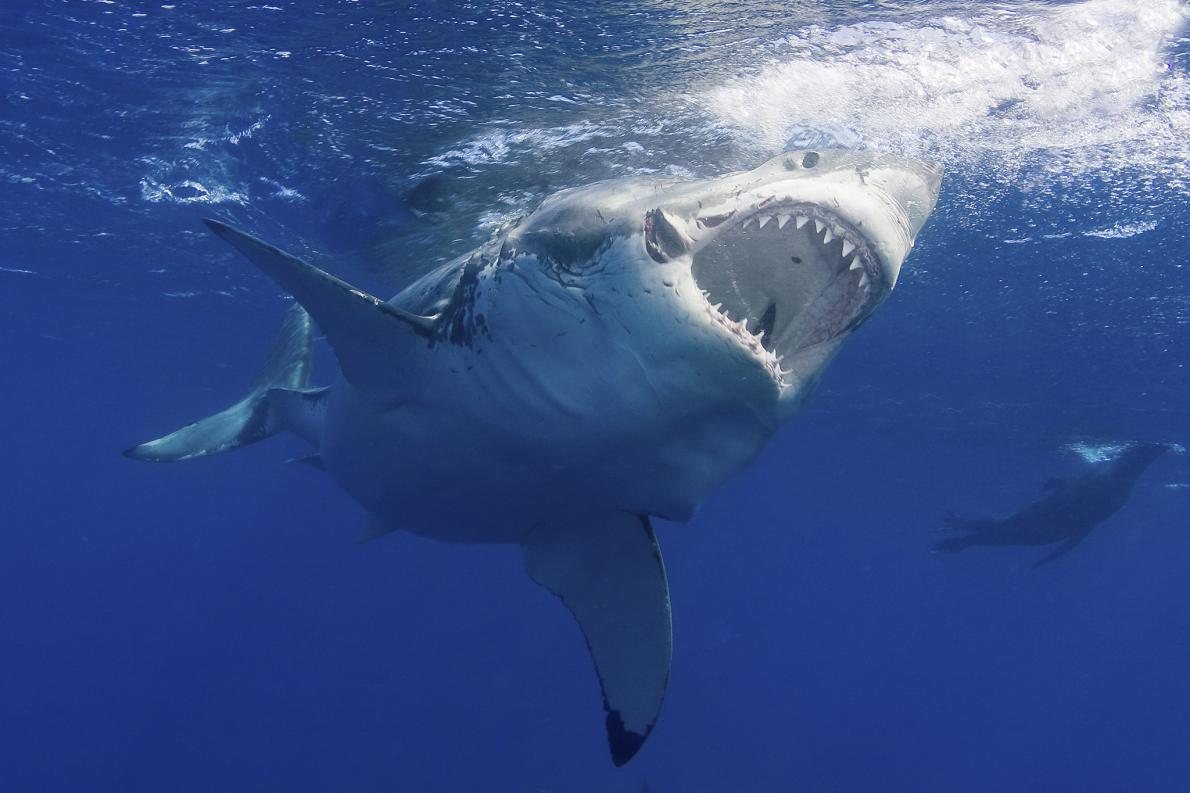A great white shark. Image by Jim Abernethy, National Geographic.
Great white sharks, a species over 16 million years old, are one of the most feared animals on Earth.They’re quite frightening; lurking in the ocean with their massive torpedo-like bodies, dagger-like teeth, and soulless, beady eyes. It’s safe to say the movie “Jaws,” is in part responsible for this fear. Let’s face it, they tend to get a bad rap, but sharks aren’t the mindless killing machines we perceive them to be.
Sharks play an essential role in the ocean’s ecosystem by keeping the food web in balance. They are top predators in the sea - a keystone species. Sharks maintain fish populations by eating them. Those fish then eat smaller fish, which eat even smaller fish, etc., all the way down the food chain. If sharks went extinct, the entire composition of the food web would shift and cause a top-down trophic cascade. The need for shark conservation has grown as the demand and exploitation rate of sharks have increased. Fishers kill millions of sharks every year for the Chinese delicacy: shark fin soup.
Every winter, in the North Pacific Basin, hundreds of great whites migrate from the California and Baja California coasts to a subtropical gyre, nicknamed the White Shark Café. This congregation area is located halfway between Hawaii and Baja California. Scientists are unsure why these sharks gather here. Maybe they’re socializing over a hot latte. More than likely, the sharks are meeting in this location to eat or mate.
At the Café, male sharks perform a strange, mysterious behavior of diving up and down continuously to approximately 150 ft. What is the purpose of this behavior? With the goal of gaining more knowledge, the Monterey Bay Aquarium Research Institute (MBARI) and other researchers are attaching camera tags to the sharks’ dorsals to record their diving conduct while they’re at the Café. MBARI has produced a neat video clip about the camera tags, available to view on YouTube.
On Feb 22nd, Europa started swimming through the southern outskirts of the Café, and she is still within the sharks’ migratory route. So far we’ve been fortunate a shark hasn’t chomped on her and obliterated all our data (keeping our fingers crossed)! Also, ship traffic has started increasing as Europa swims further into the Baja California Seamount Province (BCSP). All of this makes her more vulnerable and increases her risk.
Europa is currently surveying a few more seamounts in the BCSP. Then, she’ll start her trek home and continue to collect data. As she heads to Hawaii, we’ll want to keep her at low-risk by steering her south of the Café. Once we approach the Big Island where there’s more ship traffic, we’ll decide the best path into port to prevent a collision. So far, we’ve been able to steer away from any critical danger. We hope to keep it that way!


